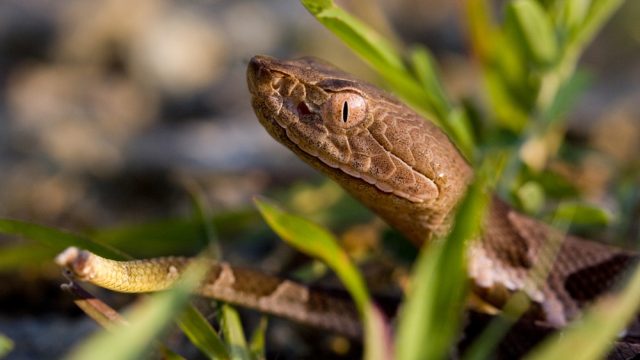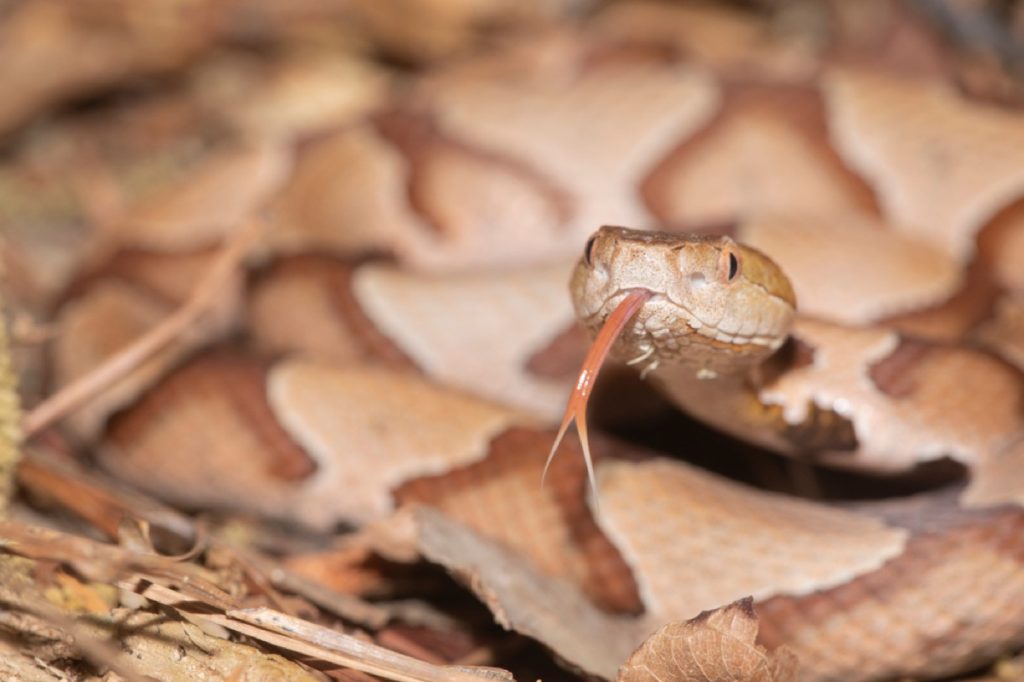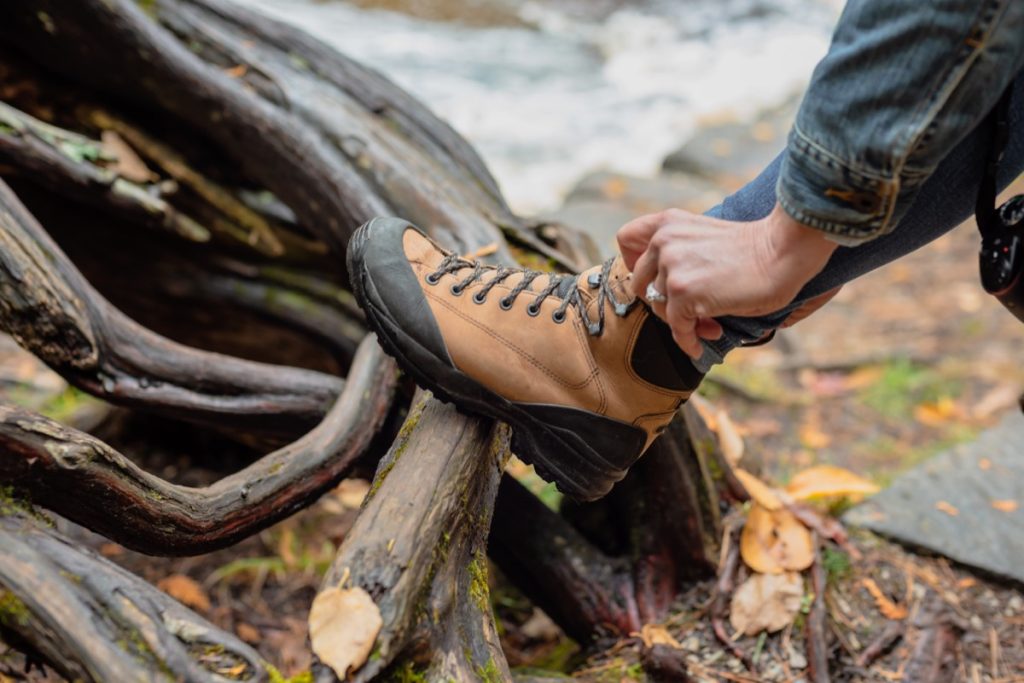It’s Snake Season: “Look Carefully” When Doing This, Experts Caution

Even though the weather is just starting to cool down as fall settles in, there are still plenty of reasons to spend time outdoors. For many, autumn provides the perfect conditions to take hikes, explore nature, and enjoy the season’s changing colors. But although the temperature is dropping, other animals are still out and about before they begin their winter-long retreat—including venomous reptiles. In fact, experts warn that it’s essential to “look carefully” while doing certain activities amid a special part of snake season. Read on to see where officials say you should be most cautious in the coming weeks.
READ THIS NEXT: The No. 1 Sign There’s a Snake in Your Car.
Snake season isn’t over just because summer has finished.

Autumn comes with all kinds of signs for the upcoming winter as the leaves change and fall from the trees and animals begin to prepare for a winter slumber or migration. But before temperatures get closer to freezing, it’s still considered snake season in most areas. Many venomous species are also now becoming less nocturnal as cooler temperatures make it easier for them to hunt during the day without overheating, according to LiveScience.
However, it’s not just the change in sleeping cycles that makes you more likely to see snakes around right now. It’s also the time of year when copperheads give birth to their live young, which are often born in clutches of up to 18 at a time, according to LiveScience. The tiny youngsters leave their mothers several days after they’re born to hunt and fend for themselves.
Officials warn that you should “look carefully” while doing this during baby snake season.

With the baby snake population boom underway, authorities in some areas are reminding residents to stay vigilant whenever spending time outdoors over the next several weeks.
“From now through November, it is baby copperhead snake season,” the Tennessee Valley Authority (TVA) wrote in a Facebook post. “If you are hiking or walking, be sure to look carefully where you step or place your hands.”
The agency warns that it’s especially important to remain alert while completing any late-season work on your lawn. “Baby copperheads are small and like to hang out in damp places like logs on the trail or flowerpots in your yard. Look for the yellow/green tail tip as an additional way to spot them,” TVA writes.
RELATED: For more up-to-date information, sign up for our daily newsletter.
The baby snakes are much smaller than adults, sometimes making it harder to notice them.

Contrary to popular belief, baby copperheads can still control the release of venom when they bite, making an encounter with them similar to that of an adult, according to AZ Animals. But what makes the youngsters potentially more dangerous is that they can be harder to spot—and not just because of the camouflage pattern down their back that helps them blend into their surroundings.
“They’re really so small, it’s hard to see them; that’s why we get worried about this season,” Robert Bourne, director for the Bryan County Oklahoma State University Extension Center, told local NBC and ABC affiliate KTEN. “They usually come out in spring and fall. Either time they can be dangerous for us to humans.”
And even though the species isn’t aggressive, it’s notorious for being one that will strike without warning when they are surprised, according to LiveScience. However, there’s one situation where your ears might have an advantage over your eyes.
“They don’t make the rattling sound a rattlesnake would do, but they do in the leaves. They will make a rustling sound if you get too close,” Bourne told KTEN.
You can do a few things to protect yourself from a copperhead bite.

Staying alert can always help cut down on the chances of having a run-in with a snake. But if you’re spending time outdoors, it can also help to have a little extra protection—especially while the little ones are about.
“Make sure you have leather boots that are mid-shin length; that’s going to protect you,” Matt Gamble, senior manager for Choctaw Nation Wildlife Conservation, told KTEN. “If you go full out, you can get snake chaps or snake leggings that are snake-proof.”
The same advice goes for anyone gardening to tending to their lawn. “You can always wear thick gloves while doing yard work, and just look where you’re putting your hands,” Ben Morrison, a South Carolina–based herpetologist who works for the Amphibian and Reptile Conservancy, told Garden & Gun.
If you get bitten after accidentally disturbing a snake of any kind, there’s still no reason to panic: Modern medical treatment has made it incredibly rare for people to die from such an encounter, according to the Centers for Disease Control and Prevention (CDC). That’s why experts suggest getting to an emergency health center immediately so doctors can address the situation.
“The best thing for you is to remain calm,” Gamble told KTEN. “If you get really excited, it’s going to increase your heart rate, which is going to spread the venom quicker in your body… so remain calm.”